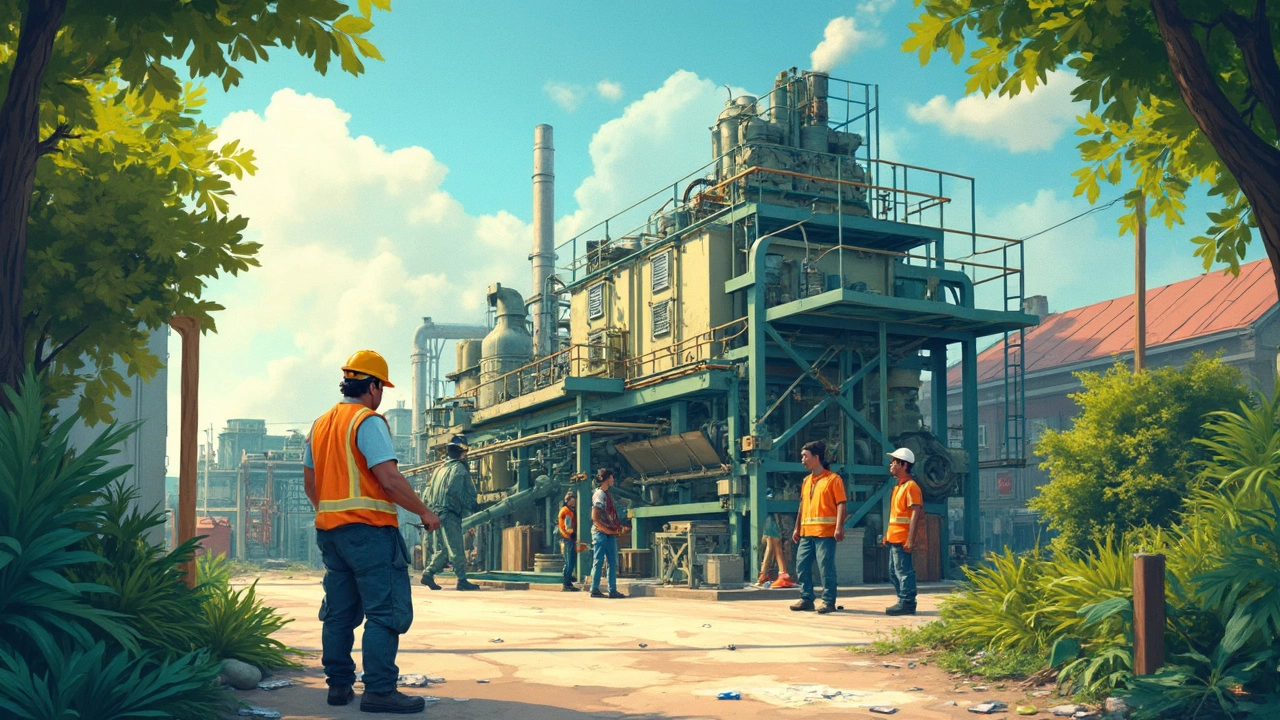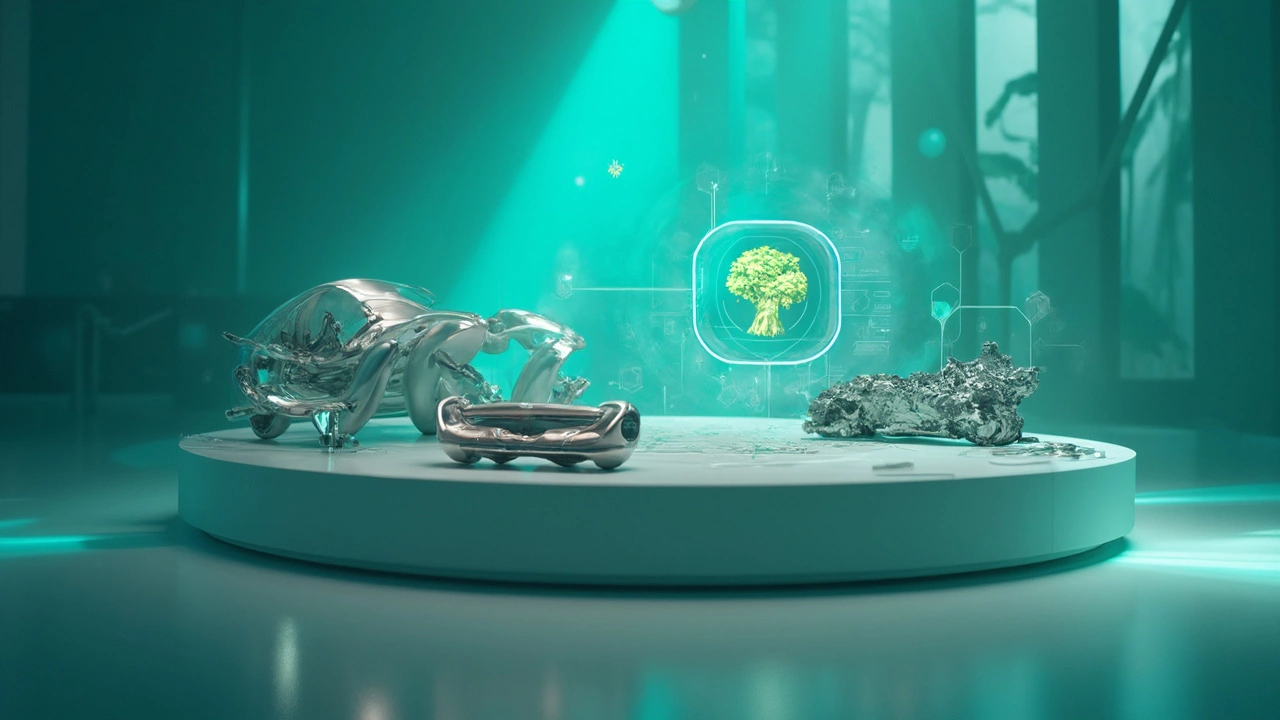
Ever thought about how many plastic companies are out there churning out everything from grocery bags to high-tech car parts? In the US, there are around 16,000 of these companies making it happen. That's a ton of businesses, right? And each of them plays a unique role in our wild world of plastics.
This isn't just about mass-producing the stuff that fills our recycling bins. These companies are huge contributors to our economy, supporting millions of jobs and billions in revenue. They crank out the essentials for industries you wouldn’t even imagine – think medical, automotive, aerospace, and more.
And here’s something worth thinking about: these companies are also on the frontline of tackling environmental issues. With the world keeping a close eye on sustainability, many of these businesses are pivoting to eco-friendly practices, trying hard to make plastics less of a problem for our planet.
- The Size of the Industry
- Major Players and Their Contributions
- Technological Innovations
- Environmental Challenges
- Emerging Trends
- Economic Impact
The Size of the Industry
So, just how big is the US plastic manufacturing scene? Well, it’s pretty massive. Right now, there are about 16,000 plastic companies in the United States, and these guys are busy as bees, cranking out tons of products every day. From everyday items like food containers and water bottles to high-tech gadgets and car components, their reach is huge.
Why is this industry so sprawling? It’s all about diversity and demand. Plastics are insanely versatile; they’re used everywhere, from packaging in grocery stores to protective gear in hospitals. Plus, they’re essential in sectors like construction, automotive, and even cutting-edge tech, which keeps these companies in constant demand.
| Industry Snapshot | Details |
|---|---|
| Number of Companies | 16,000 |
| Employees | Over 1 million |
| Annual Revenue | $432 billion |
With over a million people working in this sector, it’s a vital engine for the US economy. It doesn’t just stop at providing jobs, though. These companies are in a constant race to innovate and meet the ever-growing demands of eco-friendliness and sustainability. The industry is shifting as they try to balance making durable, versatile products and reducing the environmental footprint.
So next time you're sipping from a plastic cup or driving to the beach, remember there's a massive network of plastic manufacturing companies behind those items, keeping everything ticking smoothly.
Major Players and Their Contributions
When it comes to the big fish in the plastic game in the US, a few names really stand out. Think Dow, ExxonMobil, and LyondellBasell. These giants aren't just mixing chemicals in labs; they're shaping the entire plastic manufacturing landscape and even steering global trends.
Dow is probably a name you’ve heard. They're leading the charge in innovation, focusing heavily on sustainable solutions. Not just about pumping out more products, Dow is diving into recycled materials and technology to reduce waste, which is a big deal these days.
Next up, we've got ExxonMobil. While they're often associated with energy, they've carved out a solid spot in plastics too. Their products are used in a bunch of stuff we use every day, from packaging to automotive parts. They're digging into research to improve plastic recycling efficiency, which could change the game.
Then there's LyondellBasell. These folks are pushing boundaries with technology to amp up efficiency and sustainability. They’re big on polymers and chemicals, providing solutions that wind up in goods ranging from electronics to healthcare products.
Something crucial in understanding the industry is how it's spread across different sectors. Check out this breakdown of the segments these companies serve:
| Company | Key Segments |
|---|---|
| Dow | Packing, agriculture, recycling |
| ExxonMobil | Automotive, packaging, construction |
| LyondellBasell | Aerospace, healthcare, electronics |
By leading innovation and adapting to global demands, these major players do more than just manufacture products. They set industry standards and trends, helping move the needle toward more sustainable practices. So next time you come across any plastic product, think about the massive effort and innovation that goes behind the scenes by these industry heavyweights.
Technological Innovations
The plastic manufacturing landscape is changing fast, thanks to some mind-blowing tech advancements. We're talking beyond just making molds faster or using new materials. It's a whole new ball game, folks.
First up, let’s chat about 3D printing. It's not just for cool prototypes or hobbyists anymore. In the plastic companies, this tech is paving the way for on-demand production, reducing waste by only using the material that’s needed each time. Think of it like printing out your own dinnerware set right before a party!
Then there's the rise of bioplastics. These are made from renewable resources, unlike traditional plastics, which come from fossil fuels. Companies are investing big in this area, hoping to satisfy the growing demand for more sustainable plastic manufacturing processes.
Let’s not forget about smart manufacturing and IoT (Internet of Things). Smart devices and sensors are being integrated into production lines, providing real-time data to improve efficiency, reduce downtime, and maintain quality. It’s like giving your machinery a brain, and it’s happening across the board in the industry.
Some US market players are also incorporating AI to streamline operations. This tech is helping to predict machine failures before they happen, optimizing production schedules, and even customizing designs on the fly. The result? Faster production, happier customers, and better use of resources.
And for those who love numbers, here’s where RFID technology plays in. This tech is being used to track products from production through delivery, with a keen eye on minimizing loss and maintaining stock levels. It’s efficient and ensures that everything is in the right place at the right time, keeping everyone smiling.
These innovations are all about making plastic manufacturing smarter, cleaner, and more efficient. While these advancements might still be ramping up, the es are as present as ever, and they’re setting up the industry for a fascinating future.

Environmental Challenges
Plastic manufacturing isn't all sunshine and rainbows; it comes with some hefty environmental challenges. You might have heard about the plastic pollution that's messing with ecosystems worldwide. Tons of plastic wind up in the oceans every year, harming marine life and even ending up in the fish we eat! It's not cool, and companies in the plastic manufacturing scene know it.
One of the biggies these days is finding ways to make plastic less harmful. Many plastic companies are trying to jump on the green bandwagon. They're developing biodegradable plastics and working on recycling strategies to cut down waste. It's part of an effort to turn the industry from an environmental villain to a responsible player in a sustainable future.
But it’s not just about making 'greener' plastic. The process itself can be pretty resource-intensive. Producing plastic involves a whole lot of energy and water, along with emissions that aren't doing our atmosphere any favors. That's why these companies are investing in energy-efficient technologies and closed-loop systems that recycle water during production.
Check this out: Some companies are even pioneering tech to capture and reuse CO2 emissions during the production process. Imagine turning something harmful into something useful! It's a game-changer in the race to lessen the carbon footprint of the entire US plastic manufacturing industry.
Here’s an eye-opener: about 9% of plastic waste is actually recycled. That’s not nearly enough, so a lot of companies are championing improved recycling practices. They're collaborating with governments, communities, and even competitors to boost recycling rates. The goal? Making sure plastic stays in the loop instead of heading to landfills.
Plastic manufacturing companies in the US are doing some serious heavy lifting to tackle these challenges. It's all about striking that sweet balance between meeting industrial demands and keeping our planet in one piece.
Emerging Trends
So, what's cooking in the plastic world these days? Tons of cool stuff, actually. Companies are catching on to some game-changing emerging trends that are flipping the script on how things are done. Let’s dive into a few notable ones.
First up, there's a big push towards sustainability. With everyone being eco-conscious these days, plastic companies are diving into recycling and bio-based plastics. They're investing in tech to turn plastic waste into something useful again. Some are even tinkering with plant-based materials, which could end up being a real game-changer.
Then there’s the tech side of things. Innovations like 3D printing are taking the world by storm. It's not just for fun; these printers are customizing pieces for everything from health care gadgets to automotive parts. It's efficient, less wasteful, and companies love it because it saves on costs.
Let’s talk smart plastics. Yeah, you heard it right. This is where tech meets materials science. Think self-repairing materials or plastics that change color to indicate something's not right. The idea is to make products last longer and work smarter.
But it doesn’t stop there. The industry's also diving into micro-factories and local production. This helps reduce shipping emissions and gets products to market faster. Plus, with everyone concerned about supply chain chaos, it just makes sense to keep things close to home.
| Trend | Impact |
|---|---|
| Recycling & Bio-Based | Reduces landfill waste, taps into eco-conscious buyers |
| 3D Printing | Accelerates production, decreases material waste |
| Smart Plastics | Enhances product lifespan, adds value through new features |
| Local Production | Minimizes shipping costs, supports local economies |
All these trends signal a bright future for the industry, where innovation and sustainability walk hand in hand. It's a dynamic landscape, and those who adapt are sure to thrive. Keep an eye on these trends—they're set to reshape how we think about plastic manufacturing.
Economic Impact
The plastic manufacturing industry is a powerhouse in the US economy, with some jaw-dropping numbers backing that up. You know, it’s not just about cranking out plastic bottles and straws. These companies are integral to many sectors, making up a substantial chunk of the economic pie. In fact, this industry employs over a million people and supports countless more in connected fields like recycling and distribution.
So why is this such a big deal? Well, this industry doesn’t just provide loads of jobs—it’s also pivotal for other industries that rely heavily on plastic products to keep their operations running smoothly. Think about the last time you were at the doctor's office or the hospital—everything from syringes to IV bags comes from these companies. It doesn't stop there, though. The automotive and aerospace sectors also lean heavily on plastics for lightweight components.
Let’s not forget revenue. We're talking a mind-boggling amount, mostly in the ballpark of $400 billion, driving a significant part of the US economy. This isn’t small change, especially when you consider how it keeps the wheels of so many other businesses turning smoothly.
With billions in revenue, a huge employment base, and links to so many other industries, it’s clear why the plastic manufacturing sector is a cornerstone of the US economy. It’s like this giant, unglamorous engine that’s quietly running in the background, keeping so much else moving.
| Sector | Jobs Supported | Annual Revenue |
|---|---|---|
| Plastic Manufacturing | Over 1 million | $400 billion |